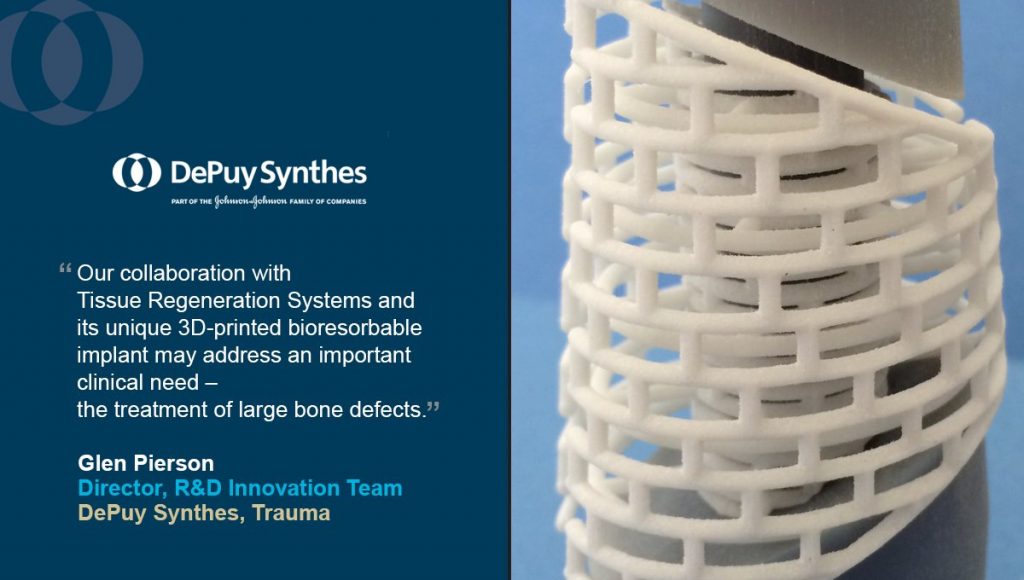
A demonstration of 3D printed implants. Quote inset from Glen Pierson, Director R&D Innovation Team, DePuy Synthes. Image via @DePuySynthes on Twitter
A 3D printed product pipeline
The acquisition of Tissue Regeneration Systems’ technology adds to over 50 strategic partnerships made by the Johnson & Johnson Family of Companies for the specified use of 3D printing. Ciro Römer, Company Group Chairman at DePuy Synthes, comments,
We are systematically investing in building a pipeline of 3D printed products. The TRS technology, which will be added to the DePuy Synthes Trauma Platform, is the latest example of how we are working toward developing next-generation technologies that transform healthcare delivery with individualized solutions for patients.
Breakages, fractures and defects
DePuy Sythes’ trauma platform catalogs plates, pins and cages for bone support and repair in areas such as the spine, knee, arms, legs, the jaw and the skull. The existing products are made primarily from stainless steel, titanium or medical-grade PEEK plastic.
Tissue Regeneration Systems’ trademark product to be used by Deputy Synthes is a mineral coating called Affinity. This can be applied to both titanium and PEEK materials to promote bone growth after a break or fracture.

Example of 3D printed cages from Tissue Regeneration Systems (left) and titanium and PEEK lumbar cages for use in the spine (right). Image via tissuesys
Robert G. Urban, PhD, Global Head Johnson & Johnson Innovation, adds,
The acquisition of the TRS technology by DePuy Synthes is testament to our ability to identify and work collaboratively with promising early-stage companies and entrepreneurs to accelerate bringing innovative new products to market. We are excited at the potential this technology holds to help improve patient outcomes.
No two bones break the same way
As medical implants are relatively small, in comparison to aerospace components, this sector has been quick to adopt 3D printing technology into its process. Furthermore, as no two bones break the same way, a key advantage of 3D printing such implants is that they can be designed to perfectly fit any given injury.
A landmark case in Australia used a 3D printed titanium plate to reconstruct the jaw of radio producer Susie Robinson. Research across the globe is also looking for ways to improve the atypical design of implants. Some research, such as that at the University of Greifswald, Germany, is looking to instil drug-leaking capabilities into implants to provide pain relief at the source of inflammation.



